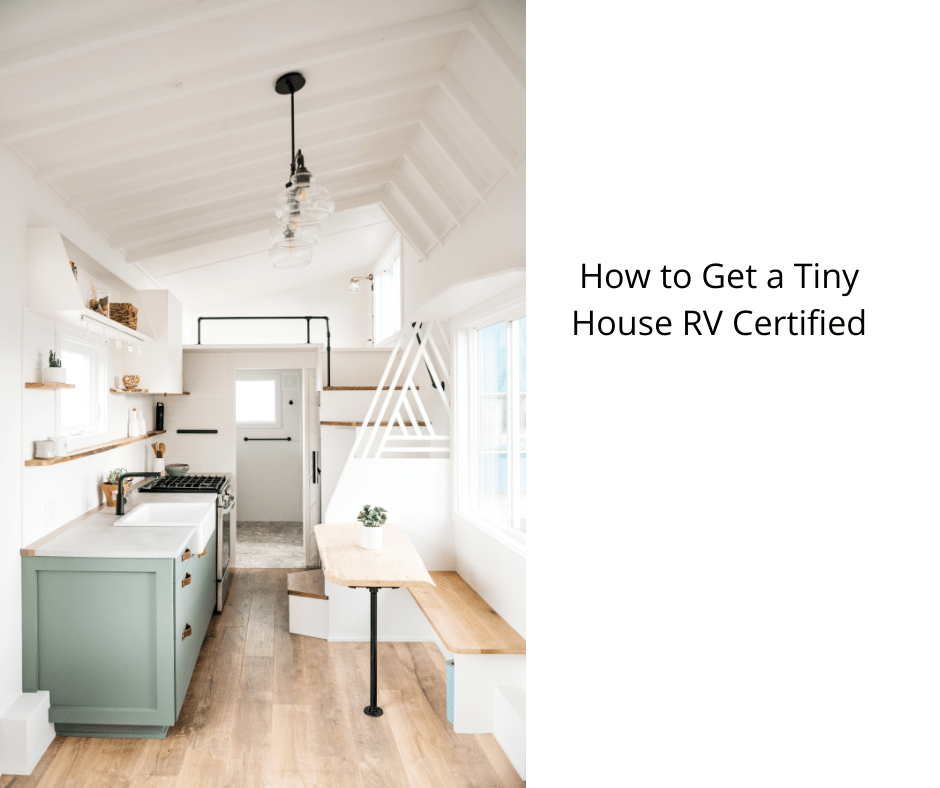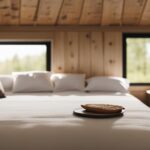If you’re thinking about building a tiny home, you may be interested in the process of getting RV certification for your tiny house. It’s crucial to note that the RVIA doesn’t inspect every tiny house; instead, they conduct random inspections four times a year. During these inspections, the inspector will use the Traveler checklist to assess your tiny dwelling. Remember, this inspection is not mandatory for those planning to live in their tiny house full-time.
Getting a Tiny House RV Certified
Getting a tiny house RV certified is a good way to protect yourself and your investment. Insurance companies and lenders are wary of tiny homes due to their difficulty in defining the standards for such structures. However, having a certified RV can help you get better rates. There are two ways to get your tiny house RV certified: first, you can hire a company to do it for you, or you can do it yourself. In either case, you will need to provide specific paperwork.
Getting a tiny house RV certified is not an easy task. To qualify, it must meet specific standards set forth by the RVIA, which requires a rigorous inspection. You also must be prepared for random checks by the RVIA’s inspectors. These inspections are not always scheduled in advance, and they require a large amount of planning and resources. In addition, you must be a member of the RVIA to obtain a tiny house license.
It is essential to get a tiny house RV certified because it can help you access campgrounds and parks. In addition to the benefits of being a certified RV, it will also help you resell your tiny house. While it might not be necessary, it can make your life easier and help you build your savings account. In this way, you can enjoy the freedom that tiny living offers.
Getting a tiny house RV certified can be a good idea if you plan to use it as a permanent residence. But it’s unnecessary if you’re planning to travel around the country. Some tiny homes are not mobile, and will remain in their current location forever. The national standards for tiny homes are still strict, but there are steps you can take to get your tiny house RV certified.
Insurance Companies Require Certification
If you’re thinking about insuring your tiny house, you might have some questions about the process. First, you need to be sure that your RV or manufactured home is certified. Most large homeowners insurance carriers won’t insure tiny houses that aren’t approved by the RV industry association, but there are specialty insurers who will. They’ll also require proof of code-compliant materials and wiring, so you should document your tiny house’s construction and take photos. Insurance for a tiny house can be tricky, so it is important to find a friendly agent to help you navigate the process.
RVIA certification is mandatory for some insurers, including Progressive. It shows that you’re complying with RV rules, which will reduce the risk of the insurer. While some companies won’t cover you if you regularly move your tiny house, others will allow you to purchase transit endorsements that extend your insurance to your tiny house. Generally, these types of policies cover the structure of your property, up to the policy limits.
If you have any questions about your tiny house, you should consult with a licensed agent to get a free quote. You can also get discounts for multiple policies from one company. Foremost Insurance is a good choice if you’re looking for insurance for a mobile home. In addition to their online quotes and customer support, they also require tiny house RV certification. Another option is American Family Insurance. Depending on the state, you can bundle your home insurance policy and get a discount.
RVIA certification is a key part of the process. This certification shows that your tiny home has been built to the highest standards, making it safe for use on public roads. Most insurance companies will require your RV to be RVIA certified in order to get insurance. However, if you do it yourself, you should consider getting this certification, too. And once you get it, you can keep the seal as a reminder that your tiny house meets all regulations.
Cost of Certification
If you’re considering building a tiny house, you’ll want to know whether the state or RVIA requires this certification. This process is not cheap, and it is not appropriate for everyone. While the RVIA has been around for a long time, their program only certifies manufactured units and is unsuitable for DIY builders. There are a few differences between the two certification programs, though. First, the RVIA’s program is more expensive than NOAH’s, and it is only appropriate for big-name manufacturers.
The other difference between certification and non-certification is the cost. The RVIA requires that you build a mobile tiny house that satisfies industry standards and undergo unannounced factory inspections. This makes the certification process nearly impossible for the average one-time builder. It also requires extensive planning and a large amount of time and resources. As a result, you’ll need to invest a considerable amount of money to get your tiny house certified.
RVIA certification is not necessary for all tiny houses. Mobile homes that don’t move will still need to meet local, state, and national building codes. So, while RVIA certification is essential for the home’s safety, some builders choose not to pursue it. If you’re planning to permanently live in your tiny house, however, it’s not necessary for you to get certified. If you’re not sure whether or not you’ll need to get certified, it’s definitely worth considering. If you have a lot of time to invest in certification, it’s certainly worth it.
You may also need to get a permit to construct your tiny house. Many places require that you get a permit for a tiny house to build. While it’s inexpensive, it’s better to hire a professional to do the work. An electrician is required for tiny house installations, so be sure to hire a professional. Also, make sure your tiny house is wired according to current codes.
Buying a Tiny House from A Manufacturer
If you are considering purchasing a tiny house, you must ensure that the manufacturer is RVIA certified. This certification is a must for tiny house owners who plan to live in their tiny home on wheels. RVIA-certified homes are safer and more affordable than those that are not. RVIA-certified tiny homes can be registered with the state and can be legally occupied.
Insurance companies prefer to insure products that are defined, certifiable, and backed by experts. Purchasing a tiny house certified by the RVIA or NOAH will give you the green light for a sound insurance plan. If you choose to purchase your tiny home from a non-certified manufacturer, you must find alternative insurance options. You should use a proper contract and understand whether your manufacturer’s warranty extends across state lines.
Getting a certified tiny house is not a difficult process. Ensure that the manufacturer uses high-quality materials and a quality roof and floor. Purchasing a tiny house certified from a manufacturer means that you can be confident that the product is safe and sturdy. You can even ask for a 25-year warranty on the roof. The warranty period varies by manufacturer, but the warranty period is usually at least five years.
Purchasing a tiny house certified from a manufacturer can help you avoid any legal problems down the road. It also ensures that the home is safe and compliant with building codes and standards. The manufacturer should provide the measurements and weight specifications for their tiny homes. They should also have a manufacturer’s statement of origin and detailed records of the work. Once your home has been certified, you can get a RV license for it.
Registering a Tiny House as An RV
To register a tiny house, you will need to go through the same process as you would for any other RV. Most states require tiny houses to be registered as RVs. However, some states allow them as travel trailers or RVs. Although these homes are not meant to be lived in full-time, they will likely become more popular as they become more common. Many states have passed legislation allowing tiny houses and many more are working on similar laws.
Before you register your tiny house, you need to go to your local DMV and get it checked out. This will require you to get full measurements of the tiny house, as well as schedule a visit to a weighing station. It will also require that you provide the inspector with documentation of your build, including receipts, pictures, plans, and VIN. Once you’ve registered your tiny house, you’ll be able to get insurance and finance.
In addition to a full title, you must have a copy of your state’s registration card. You can get a duplicate title from your local DMV by mail or in person, if necessary. You will need a full-size state-issued ID and the title and registration, as well as any applicable border papers. Make sure to schedule an appointment with the DMV beforehand so that you won’t face long lines and waits.
While the state regulations for RVs vary across the country, tiny homes are not regulated uniformly. In some states, a tiny home must meet specific standards, such as dimensions and amenities. This can be done through Pacific West Associates or ANSI 119.5 guidelines. You can also contact the National Organization of Alternative Housing to get your tiny home certified as an RV. If you don’t have access to a national registry, you can apply for a variance. The variance will allow you to register your tiny home as an RV and avoid zoning laws.
Hi, I’m Emma. I’m the Editor in Chief of Tiny House 43, a blog all about tiny houses. While tree houses are often associated with childhood, they can be the perfect adult retreat. They offer a cozy space to relax and unwind, surrounded by nature. And since they’re typically built on stilts or raised platforms, they offer stunning views that traditional homes simply can’t match. If you’re looking for a unique and romantic getaway, a tree house tiny house might just be the perfect option.
















